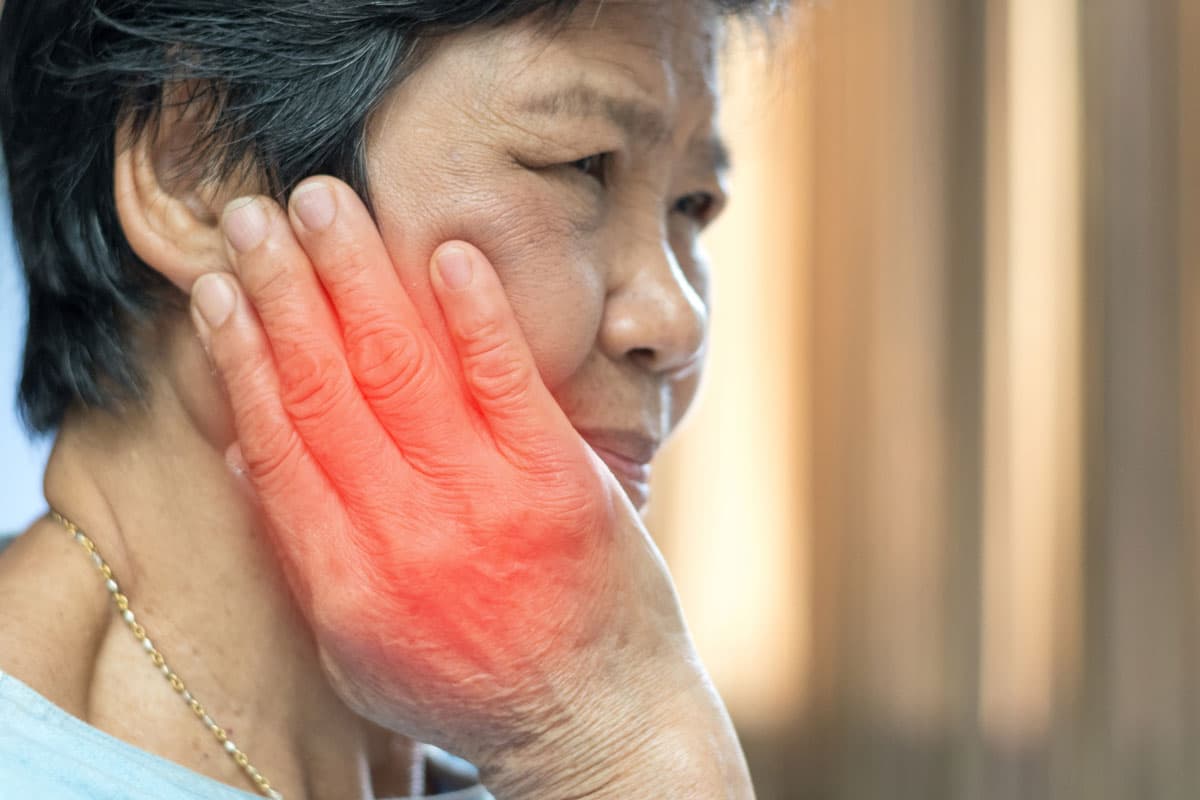
The Temporomandibular Joint (TMJ) complex, a pair of highly intricate hinge and slide joints connecting the lower jawbone, or mandible, to the temporal bones of the skull, facilitates the essential movements of speaking, chewing, and swallowing. Unlike simple hinge joints found elsewhere in the body, the TMJ allows for a complex, synchronized articulation that includes rotation and translation, which is why when this mechanism falters, the resulting disruption—collectively known as Temporomandibular Disorders (TMDs)—can manifest as a cascade of debilitating symptoms far removed from the immediate jaw area. The designation “TMJ,” often used conversationally to describe the disorder itself, is technically the name of the anatomical structure, but the underlying dysfunction, or TMD, involves a complex interplay between the joint structures, the shock-absorbing articular disc, and the surrounding masticatory muscles. The sheer prevalence of these issues, affecting an estimated 10 million or more Americans, means that the spectrum of TMD is vast, ranging from transient, mild discomfort that resolves spontaneously to chronic, refractory pain that significantly compromises a person’s quality of life. Understanding this condition necessitates moving beyond a singular mechanical failure model and embracing a biopsychosocial perspective that acknowledges the multifactorial nature of the etiology, including everything from dental occlusion to psychological stress levels.
The resulting disruption—collectively known as Temporomandibular Disorders (TMDs)—can manifest as a cascade of debilitating symptoms far removed from the immediate jaw area.
TMDs are broadly categorized into three main subtypes, each representing a distinct aspect of the dysfunction: myofascial pain, internal derangement of the joint, and degenerative joint disease. Myofascial pain is the most frequent presentation, characterized by discomfort in the connective tissue and the muscles governing the function of the jaw, neck, and shoulder. This muscular discomfort is often a result of excessive strain, frequently stemming from parafunctional habits like bruxism, the habitual and involuntary clenching or grinding of the teeth, which introduces undue and sustained mechanical load upon the masticatory apparatus. The second classification, internal derangement, speaks to structural problems within the joint itself, such as a displaced articular disc or a dislocated jaw, where the cushioning mechanism between the bones is compromised or moved out of its proper relationship. The final category, degenerative joint disease, encompasses conditions like osteoarthritis or rheumatoid arthritis that cause wear and tear or inflammatory damage to the joint’s cartilage, leading to progressive pain and functional limitation. These categories, however, are not mutually exclusive, and it is common for a patient’s experience to involve elements from two or even all three, complicating the diagnostic process and demanding a holistic, rather than segmented, treatment approach.
Myofascial pain is the most frequent presentation, characterized by discomfort in the connective tissue and the muscles governing the function of the jaw, neck, and shoulder.
The symptoms associated with TMD often extend far beyond the localized joint, creating a perplexing diagnostic challenge for both patients and clinicians. The cardinal signs usually involve pain or tenderness in the jaw, often exacerbated during function like chewing or wide opening, and a characteristic aching pain felt in and around the ear. However, the symptomatic web can also include headaches, particularly tension headaches centered around the temples or face, neck and shoulder pain, and even otological symptoms such as tinnitus (ringing in the ears), aural fullness, and vertigo, all of which are believed to be related to the shared embryological origin of certain middle ear and jaw structures, as well as the close proximity of relevant nerves. Perhaps the most recognizable, yet often misleading, symptom is the presence of joint sounds—clicking, popping, or a grating sensation known as crepitation—when the mouth is opened or closed. Crucially, a click or pop without accompanying pain or limitation of movement is often benign and typically does not necessitate invasive treatment; it is the presence of chronic discomfort and functional impairment alongside these noises that alerts a clinician to a genuine TMD pathology.
The symptomatic web can also include headaches, particularly tension headaches centered around the temples or face, neck and shoulder pain, and even otological symptoms such as tinnitus (ringing in the ears).
The etiology of TMDs is rarely attributable to a single, easily isolated cause, making it fundamentally different from a simple fracture or infection. While trauma to the head, neck, or jaw is a recognized precipitating factor, for many, the cause remains elusive, a complex interaction of predisposing, initiating, and perpetuating elements. Bruxism, whether awake or sleep-related, is a major contributor, placing enormous strain on the joint capsule and the surrounding muscles. The role of psychological and behavioral factors cannot be overstated, as stress and anxiety often translate into increased muscle tension and jaw clenching, effectively increasing the mechanical load on the TMJ system. Furthermore, structural deformities, chronic inflammation from underlying systemic diseases like rheumatoid arthritis or fibromyalgia, and even minute dental issues that create an uneven bite can act as triggers. This multicausal nature underscores why an effective long-term solution requires more than a superficial fix; it often demands a comprehensive, interdisciplinary assessment that considers a patient’s genetics, anatomical configuration, behavioral habits, and overall psychological state.
The role of psychological and behavioral factors cannot be overstated, as stress and anxiety often translate into increased muscle tension and jaw clenching.
Considering the complexity, the prevailing philosophy for managing most TMD cases strongly advocates for conservative and reversible treatments as the first line of defense. This approach prioritizes non-invasive methods that do not permanently alter the structure or position of the jaw or teeth. Central to this strategy is patient education and self-management practices, which include behavioral modifications such as eating soft foods, avoiding extreme jaw movements (like wide yawning or excessive gum chewing), maintaining good posture to reduce neck strain, and actively practicing relaxation techniques to mitigate stress-induced clenching. Pharmacotherapy in the initial stages often involves Nonsteroidal Anti-inflammatory Drugs (NSAIDs) to address pain and inflammation, sometimes coupled with muscle relaxants if clinical evidence of muscle spasm is present. The use of a simple, flat-plane occlusal splint or night guard is also a common conservative measure, designed to lessen the effects of nocturnal clenching or grinding by preventing direct tooth contact, thus resting the joint and its associated musculature without changing the overall bite structure.
The prevailing philosophy for managing most TMD cases strongly advocates for conservative and reversible treatments as the first line of defense.
The landscape of more interventional and specialized TMD treatments is rife with controversy and scientific debate, particularly regarding the efficacy and necessity of irreversible procedures. While conservative methods are widely supported by clinical evidence for the majority of patients, the conversation shifts when discussing more aggressive interventions. Procedures that aim to permanently alter the bite, such as occlusal adjustments (grinding the enamel of teeth), extensive crown work, or orthodontics to establish a so-called “ideal position” of the jaw, lack compelling, high-quality scientific evidence to prove their superiority over simpler, reversible methods. Ethical guidelines in the medical community often stress that clinicians should only move toward invasive, costly, and irreversible treatments when conservative management has definitively failed, and only when scientific backing unequivocally demonstrates a measurable benefit. The continued use of diagnostic machines measuring muscle activity or joint vibrations without clear scientific support also contributes to the confusion and variability in the treatment community.
The landscape of more interventional and specialized TMD treatments is rife with controversy and scientific debate, particularly regarding the efficacy and necessity of irreversible procedures.
When conservative treatments prove insufficient for chronic, severe, or internal derangement cases, the next steps may involve a move toward minimally invasive procedures. These options include techniques like arthrocentesis, a procedure that involves joint lavage and irrigation, which helps to wash out inflammatory mediators and potentially improve joint lubrication and movement. Another option gaining traction for refractory muscular pain, especially in cases of severe bruxism, is the use of Botulinum toxin injections into the masticatory muscles, which acts to temporarily paralyze or weaken the overactive muscles, thereby reducing the painful strain on the joint complex. Unlike major surgery, these interventions are less disruptive and aim to restore function with minimal tissue invasion. The ongoing challenge is that even for these minimally invasive techniques, clinical practice guidelines remain somewhat fractured, leading to the selection of a specific treatment often being heavily influenced by the expertise and training of the treating specialist, be they a general dentist, an oral and maxillofacial surgeon, a physical therapist, or a pain management physician.
Minimally invasive procedures are less disruptive and aim to restore function with minimal tissue invasion.
For a select, small percentage of patients—typically those with severe structural pathology like advanced degenerative changes, fibrous or bony ankylosis (fusion of the joint), or complex disc displacement unresponsive to all other measures—open joint surgery (arthrotomy) may be the last resort. These procedures, which involve direct surgical access to the joint, are associated with significant risks and recovery times and are strictly reserved for debilitating cases where the mechanical integrity of the joint has been profoundly compromised. The overarching consensus, repeated across authoritative medical bodies, is that surgery should never be considered a primary or routine approach for uncomplicated TMD, and that the long-term outcomes often do not justify the risks when compared to simpler, less aggressive treatments. The key is a meticulous diagnostic process, often involving advanced imaging like Magnetic Resonance Imaging (MRI) to accurately visualize the soft tissues of the disc and ligaments, which helps to differentiate between a muscular, articular, or combined disorder before an irreversible step is considered.
Open joint surgery (arthrotomy) may be the last resort.
Beyond the purely medical interventions, the necessity of a multidisciplinary strategy is becoming increasingly clear. Since TMD often intersects with chronic pain syndromes, psychological stress, and musculoskeletal issues in the neck and shoulders, a single practitioner rarely possesses all the necessary tools. An optimal management plan frequently integrates the expertise of physical therapists specializing in craniomandibular function, who provide gentle jaw strengthening exercises and postural correction; cognitive behavioral therapists (CBT) or other stress reduction specialists, who help patients identify and modify habits like clenching; and dental professionals for occlusal devices. This integrated approach, which addresses the biological, psychological, and social dimensions of the patient’s condition, offers the best prospect for sustainable pain reduction and the restoration of normal function. Ignoring the influence of stress or the impact of posture, for instance, means the most sophisticated dental appliance may only offer partial and temporary relief.
The necessity of a multidisciplinary strategy is becoming increasingly clear.
The development of new diagnostic and treatment tools continues, although the field is marked by the need for more standardization and higher-quality research. Emerging therapies, such as the use of Low-Level Laser Therapy (LLLT) or specific intra-articular injections, show promise in managing pain and inflammation, but their place in a standardized treatment protocol is still being defined. The future of effective TMD care hinges on moving away from the historical, often aggressive, focus on dental mechanics and toward a precise, evidence-based system that tailors non-invasive and reversible treatments to the specific classification and severity of the patient’s disorder. This evolution requires clinicians to remain constantly updated and to prioritize interventions that are both safe and cost-effective, acknowledging that for many, time and simple self-care are remarkably effective allies in the journey toward healing.
The future of effective TMD care hinges on moving away from the historical, often aggressive, focus on dental mechanics and toward a precise, evidence-based system.
The silent burden of jaw pain is a complex bio-mechanical and behavioral riddle, demanding a conservative, personalized approach to decouple the intricate joint from its cycle of chronic stress and inflammation.
